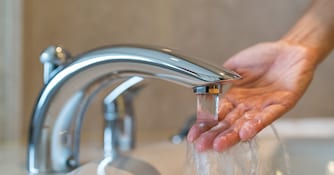
Point-of-Use Water Heater Buying Guide
You just got out of bed and cannot wait to bask in the warmth of your morning shower. Shivering, you turn on the faucet for some relief, but you must endure two additional minutes of stabbing cold before hot water reaches the shower head.
It's a problem many of us simply accept when we could instead install a point-of-use (POU) water heater for instant hot water at nearly 100% efficiency.
Unlike central water heaters, which provide hot water to all of the home faucets from a central location, POU heaters are installed at the source, right under a sink or next to a shower. Their proximity allows hot water to arrive quickly and efficiently, letting you feel the warmth on demand.
How Do Point-of-Use Water Heaters Work?
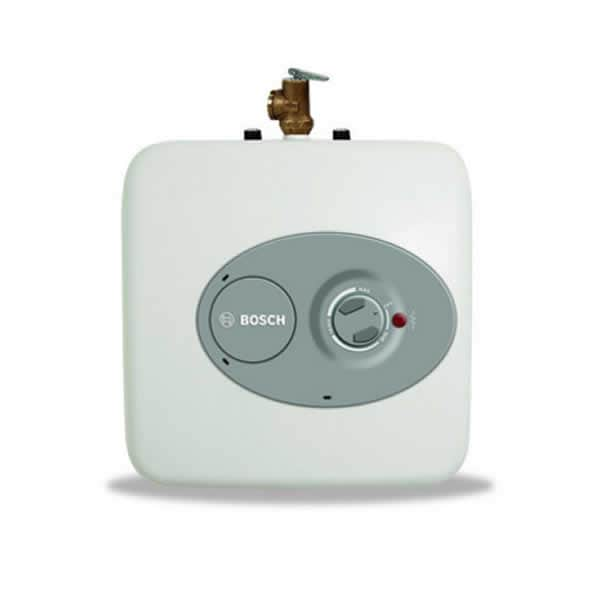 Like their larger, centralized cousins, point-of-use (POU) water heaters are available in tank or tankless styles.
Like their larger, centralized cousins, point-of-use (POU) water heaters are available in tank or tankless styles.
In both styles, point-of-use electric hot water heaters are most common. Although gas POU water heaters are available, they are more complicated and expensive to install due to venting and gas line requirements.
Electric POU tank water heaters use a heating element to convert electrical energy into heat energy. The heated water is then stored, ready for use whenever someone turns the faucet.
Electric POU tankless water heaters heat incoming cold water as it passes through the unit. They use a heating element but require higher amps of electricity than a tank unit in order to quickly raise the temperature of the passing cold water.
In general, the differences between tank and tankless POU water heaters are the same as those between regular tank and tankless units. For more information, read our article about how hot water heaters work.
Point-of-Use Applications
POU water heaters can be installed at the source, virtually anywhere you need hot water. Below is a list of common applications.
- Showers:
Having instant hot water in a shower will probably be most well-received in your household. If the shower is your furthest fixture, you're in for a long wait unless you put a POU water heater right next to it. 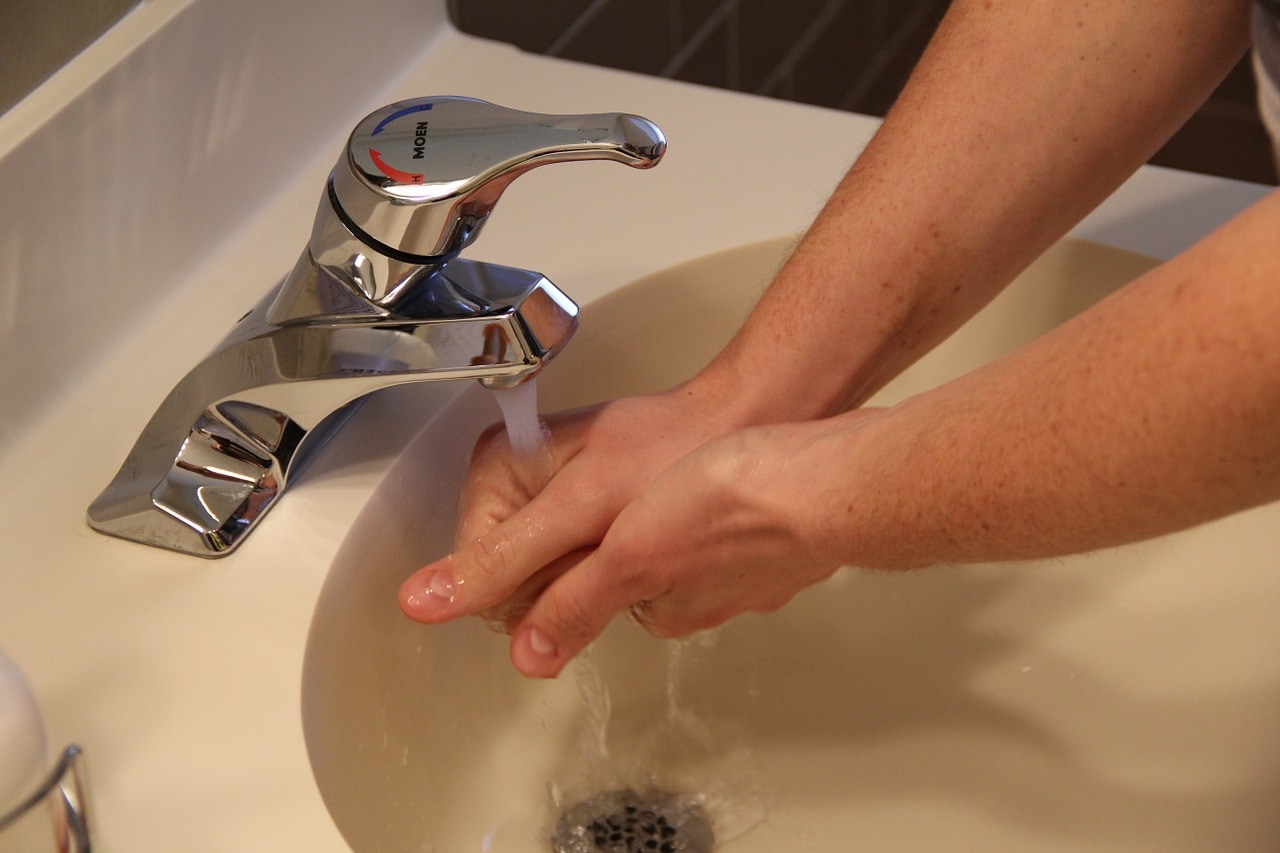 Kitchen/Bathroom Sinks:
Kitchen/Bathroom Sinks:
What goes for showers goes for kitchen and bathroom sinks. Install a POU water heater in the cabinet under the sink for immediate hot water.- Dishwashers and Washing Machines:
Both of these appliances need multiple gallons of available hot water to effectively do their jobs. Having dedicated POU water heaters that serve a dishwasher or washing machine will help ensure that your dishes and clothes come out spotless.
Why Point-of-Use?
Besides having the main benefit of instant hot water, POU water heaters provide the following:
Hot Water for Distant Faucets
Distant showers and sinks are a central water heater's biggest challenge. Since 1970, the distance from the hot water heater to the furthest fixture has increased by an average of 50 feet. Once the water is heated, it must travel all the way across the building to reach its destination.
If the building is older, there may also be pressure problems within the system that slow the water down further. Add to this the fact that the water will lose heat as it travels the distance, so it will be barely lukewarm by the time it arrives.
Located at the source, POU water heaters solve all these problems. The furthest fixture will likely receive hot water faster from a POU than if it were the closest fixture in a centralized system.
Water Savings
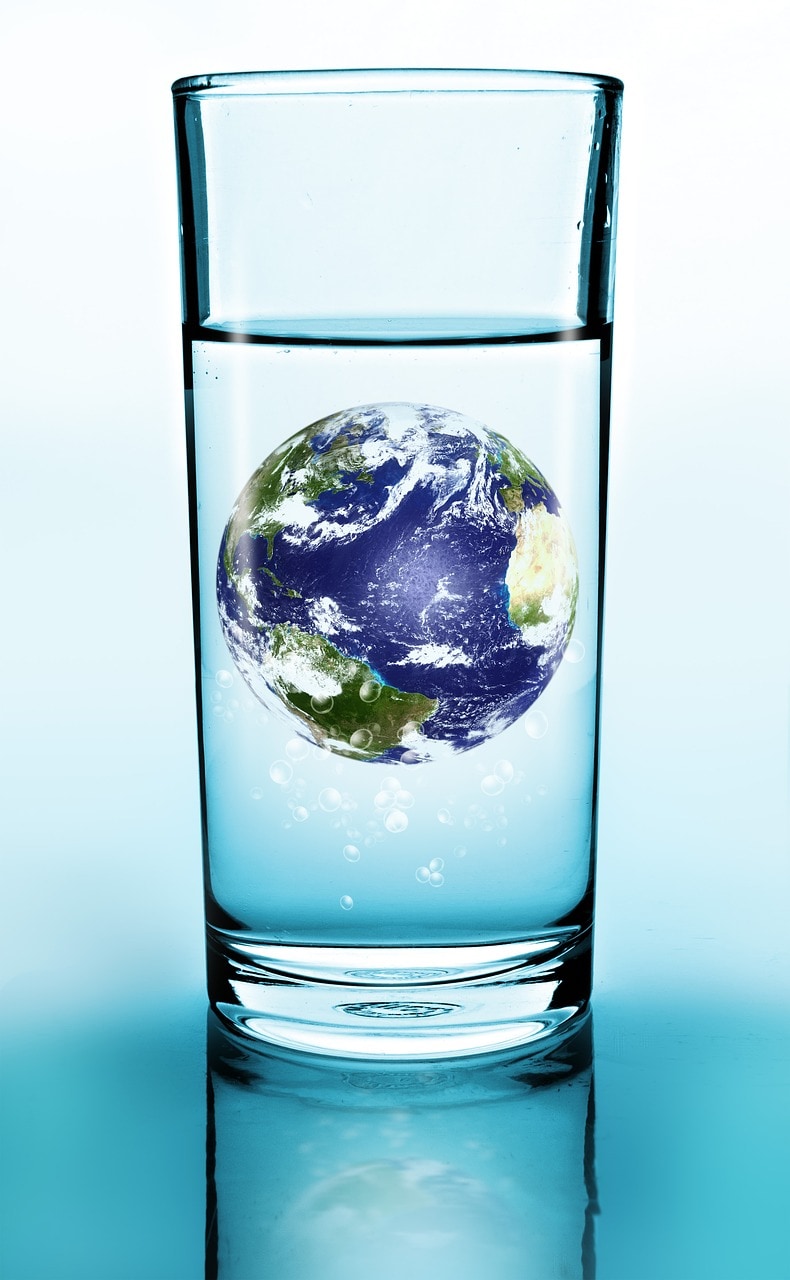 Many of us let our faucets run for a couple minutes just to let the water warm up to a comfortable temperature, which wastes water. What's more, you don't always time your wait perfectly and end up wasting some of the hot water too. In fact, up to 20% of average daily hot water is wasted in residential use.
Many of us let our faucets run for a couple minutes just to let the water warm up to a comfortable temperature, which wastes water. What's more, you don't always time your wait perfectly and end up wasting some of the hot water too. In fact, up to 20% of average daily hot water is wasted in residential use.
Imagine having a POU unit that provides instant hot water that you can use immediately. Even if it supplements a central water heater, you are still maximizing hot water efficiency.
- The POU water heater provides hot water until the central water heater kicks on.
- Once hot water starts flowing from the central water heater, the POU unit shuts off.
Otherwise, if you have a very large home, you might choose to exclusively use POU units at every faucet. Either way, you're saving substantial amounts of water, which is good for both your pocketbook and the environment.
Compact Design
POU water heaters are typically less than one-foot tall and wide and can fit in most enclosures under or beside the faucet they serve. This also makes them relatively simple to maintain.
Naturally, POU water heaters have limited output due to their small size, but that's the point. They are designed for one to two small fixtures at most. A central water heater or multiple POU units are required to meet hot water needs for an entire home, depending on its size.
Which Type of Point-of-Use Water Heater is Best?
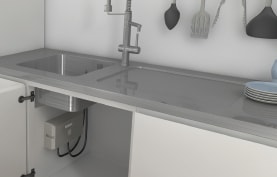
Choosing the right POU water heater rests on answering the following questions:
- How will you use the POU water heater?
- How will it fit into your existing plumbing (if applicable)?
POU water heaters work best in:
- Large Homes:
In many large homes, the furthest fixtures might be so far from the central water heater that hot water is not effectively reaching its destination. In these cases, adding a POU at the furthest faucet can be the ideal solution. - Small Homes:
Homes with limited space and low overall water usage can benefit from having a few POU water heaters versus a large central unit. - Remote Locations:
If you have an outdoor sink or shower, you can install a POU water heater to serve it quickly. The same holds true for any remote water fixture. - Home Additions:
Adding a new room to your home or garage could tax your central water heating system and result in expensive plumbing work. A POU water heater will just need a cold-water line, and you'll be good to go.
Tank or Tankless?
You also need to choose between tank and tankless POU options. This will depend on how much space you have and your intended application.
For example, if you have limited space or plan on using a fixture frequently throughout the day, then go with a tankless POU water heater. It will fit almost anywhere and can handle frequent demand.
Note: Amperage requirements for some tankless POU units can be up to 150 amps, which is more than many residential homes can handle. Always make sure you have enough electricity to power the unit; consult an electrician.
Tank POU water heaters draw less electricity and will be your best bet for light uses where you don't need a high volume of hot water, such as a guest bathroom sink.
Installation
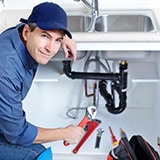 You can choose whether to use POU water heaters together with a centralized water heater or install only POU units. As mentioned, the latter is better for larger homes where the distances to faucets are longer.
You can choose whether to use POU water heaters together with a centralized water heater or install only POU units. As mentioned, the latter is better for larger homes where the distances to faucets are longer.
There are benefits to combining POU heaters with a central storage tank or tankless unit, mainly when it comes to stabilizing the flow of hot water to a faucet. The POU only needs to be on for a short period of time until the central unit fires up and starts sending hot water.
These little units can also be a great back-up for central storage tank water heaters, especially in homes with large families. If one family member takes an extra-long shower, there will be some water left for you if you use both a POU and central storage tank water heater.
Overall, installations can range from being simple to complex. Give us a call to discuss possible solutions for you. We recommend you hire a professional to ensure proper installation, especially if a hard-wired electrical connection is also needed.
The Bottom Line
Overall, anyone can benefit from a POU water heater because we all want faster hot water and lower utility bills. And these units won't break the bank, with many costing less than $300.
So, to guarantee hot water to even the furthest fixtures in your house, go with a POU water heater.
Water Heater Buyer's Guide Navigation
Home | Tank Water Heaters | Tankless Water Heaters | Point-of-Use Water Heaters | Indirect Water Heaters




